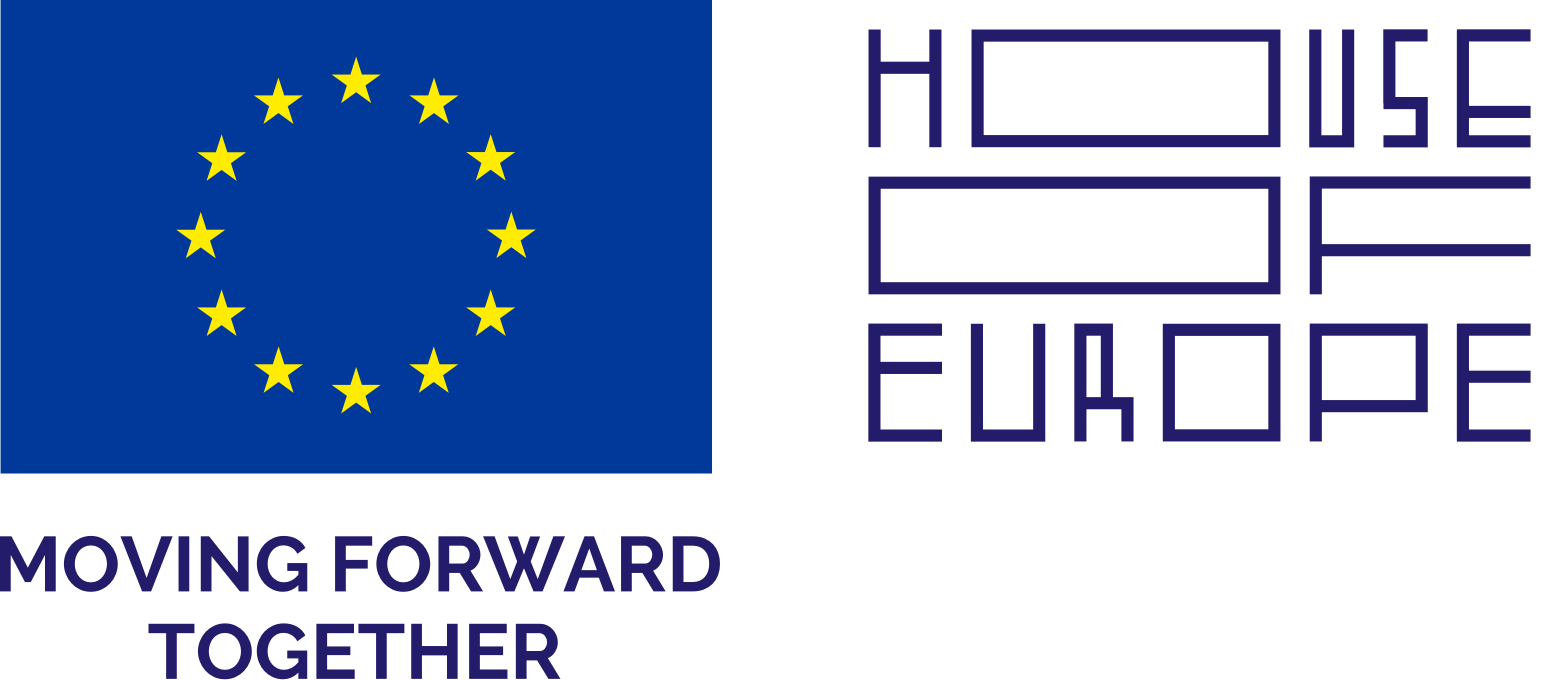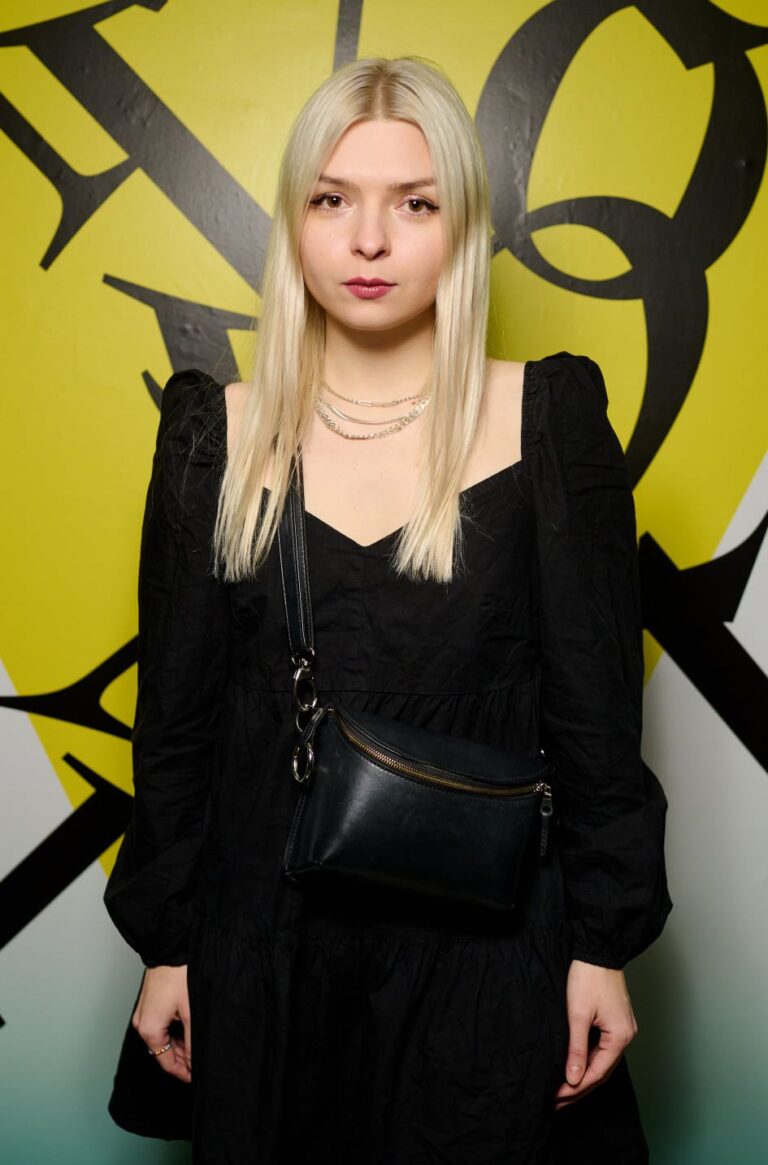

– born in 1995. She is an interdisciplinary media artist from Kharkiv, who works in the field of digital technologies with video, VR and AR, installation, 3D animation and sound, with an emphasis on posthumanism and feminist practice.
In her artistic expressions, she covers a wide range of issues: from geopolitical aspects and power structures to purely intimate spheres of life, addresses the topic of violence and gender identity, the state of women in artistic and social contexts. Finalist of the Exter cultural exchange program with the support of the Ukrainian Institute. Fellow of the Gaude Polonia 2021 programme from the Polish National Cultural Center. Participant of the 19th WRO Media Art Biennale
2021 in Wroclaw. She has collaborated with institutions in Slovakia, Germany, Austria, Ukraine, Poland, and Lithuania.
Most of my projects started with a small whisper of a song which I couldn’t forget. Or the paperback novel I read while traveling. I’m trying to incorporate my own sensibilities and sentimental experience within the detached digital world. I chose media-art because it gives me the freedom to create an immersive space that can embody all these qualities. I am interested in building up an itinerary of everything that one encounters in a “virtual reality” and the impact that these phenomena have on concrete social reality.
At the beginning of my studies in Kharkiv Art Academy I was working with printmaking, but after a couple of years my main medium changed completely. This change was a logical result of my increasing receptivity to the issues that surrounded me. So, I had to find the right language to articulate these issues and problems that every woman faces while growing up in a post-Soviet country.
Each region of Ukraine has developed its own media art context autonomously since the beginning of the 1990s1. They were searching for their own voice beyond the limits of traditional artistic forms that were products of social realism.
Frankly speaking, this tradition is still dominating in the educational programs of art colleges and universities.
Nowadays, we have a new generation of media artists who’ve grown up in front of their laptops and educated themselves with the help of open online resources. I had the same experience as well.
I want to mention my project Come wander with me234567, because it is a prominent example of my working method. It consists of two parts, both covering the issue of women’s freedom of movement and their (in)security on the streets of a modern megapolis. I tried to transmit my experience of travelling and wandering solo.
Another painful topic my project deals with is the phenomenon of victim-blaming. It raises the important question about why the society puts responsibility for violence not on an aggressor, but on a victim; why the aggression is justified and perceived as something natural; and what kind of measures could be taken – not to protect the potential victims, but to actually prevent the violence and aggression?
Furthermore, my decision to explore this particular theme wasn’t accidental.
Before starting to work on the project I got shocked by a call from my friend, who got attaсked near her house that evening. It’s a sad fact to admit, but most of the women I know faced some kind of dangerous situations in their life – on their way from school or during a late walk on the streets.
In my video-work Fade\bloom8 I was creating alternative identities in the form of an avatar with constantly shifting gender features and roles910.
The avatar of this work was based on a story of Virginia Woolf’s gender-fluid and superhuman heroine, who represents much more than a single individual. As a work of political satire and feminist fantasy, Orlando11 laid the groundwork for today’s cultural landscape, in which the boundaries of both gender and art genre are more porous than ever. Through a protagonist who over the course of several centuries makes a joyful case for the transgression of all limits on desire, curiosity, and knowledge.
I would agree with a phrase from Carol Hanisch’s memorable 1969 article The Personal is Political12, where she talks about so-called women therapy groups: “So, the reason I participate in these meetings is not to solve any personal problem. One of the first things we discover in these groups is that personal problems are political problems. There are no personal solutions at this time. There is only collective action for a collective solution”.
To sum up, I think it’s important to articulate these issues – women’s freedom of movement, vulnerability on the streets, victim-blaming, as well as finding their key points and sharp edges. While dealing with media art, I have always been fascinated by the possibility of seamless storytelling through the consciousness of the main characters, from within their thoughts and feelings. Intertwining of diverse, yet intersecting lives, with their voices sounding over the constant echo of the waves whipped into a thousand white horses, attacking the shore13.
The final version of the statement was edited in collaboration with Iryna Polikarchuk (2022).
1See: /mediaartarchive.org.ua/eng/.2Anna Manankina, Come wander with me, 2020, video-art. See: /bit.ly/3g1quyu/.
3Image: Memorial of a girl Ludmila Tatarchenko, who was killed in the middle of summer 1995. It happened in my hometown Kharkiv, in the neighborhood near the Central Square. Courtesy of the artist.
4Image: Anna Manankina, Come wander with me, 2020, digital print, A3. Courtesy of the artist.
5Image: Anna Manankina, Come wander with me, 2020, digital print, A3. Courtesy of the artist.
6Image: Anna Manankina, Come wander with me, 2020, digital print, A3. Courtesy of the artist.
7Image: Anna Manankina, Come wander with me, 2020, exhibition, Artsvit gallery, Dnipro, Ukraine. Courtesy of the artist.
8Anna Manankina, Fade\bloom, see: /vimeo.com/339577209/.
9Image: Anna Manankina, Fade\bloom, 2019, video frame. Courtesy of the artist.
10Image: Anna Manankina, Fade\bloom, 2019, video frame. Courtesy of the artist.
11Carol Hanisch, The Personal is Political [in] Introduction by Carol Hanisch, 2006.
12Virginia Woolf, Waves, 2016, Vintage Publishing.
– народилась у 1995 році. Міждисциплінарна медіа-художниця з міста Харків. Працює в області цифрових технологій з відео, VR та AR, інсталяцією, 3D-анімацією, звуком, з акцентом на постгуманізм і феміністську практику.
У своїх художніх висловлюваннях охоплює широке коло проблем: від геополітичних аспектів та владних структур до суто інтимних сфер життя, звертається до теми насильства та гендерної ідентичності, стану жінки в художньому та соціальному контексті. Фіналістка програми культурного обміну Екстер за підтримки Українського інституту. Стипендіатка програми Gaude Polonia 2021 від польського Національного центру культури. Учасниця 19-го медіа-арт бієнале WRO 2021 у Вроцлаві. Співпрацювала з інституціями в Словаччині, Німеччині, Австрії, Україні, Польщі, Литві.
Більшість моїх проєктів почалися з невеликого рефрену у пісні, яку я не могла забути, або з книги в м’якій обкладинці, прочитаної під час подорожей. У своїй роботі я хочу об’єднати чуттєвість і сентиментальний досвід у відчуженому цифровому світі. Я вибрала медіа-арт, тому що це дає мені певну свободу для створення імерсивного простору, який може увібрати всі ці якості. Мені цікаво конструювати маршрут, яким людина пересувається у «віртуальній реальності», та спостерігати за тим, як це впливає і взаємопов’язується із соціальною реальністю.
На початку навчання у Харківській художній академії я працювала в техніці друкованої графіки, але за декілька років основний медіум моєї роботи повністю змінився. Ця зміна стала логічним результатом зростаючої чутливості до проблем, які мене оточували. Тож мені довелося знайти правильну мову, щоб сформулювати проблеми, з якими зіштовхується кожна жінка під час свого життя в пострадянській країні.
Кожен регіон України від початку 1990-х років розробляв власний автономний контекст медіа -мистецтва1. Шукав власний голос поза межами традиційних художніх форм, що були результатом соцреалізму.
Відверто кажучи, ця традиція досі домінує в освітній програмі мистецьких коледжів та університетів.
Зараз з’явилось нове покоління медіа-художників, які виросли, сидячи за ноутбуками, та самостійно навчалися за допомогою відкритих Інтернет-ресурсів. Я мала схожий досвід.
Я хочу згадати свій проєкт Come wander with me234567, бо він є яскравим прикладом мого методу роботи. Він складається з двох частин, що охоплюють проблему свободи пересування жінок та їхньої (не)безпеки на вулицях сучасного мегаполісу і передає мій досвід подорожей та мандрівок на самоті. Ще одна болюча тема, з якою я працювала в проєкті, – явище звинувачення жертв. Це порушує важливе питання, чому суспільство покладає відповідальність за насильство не на агресора, а на жертву; чому агресія виправдана і сприймається як щось природне; які заходи можна вжити – не тільки для захисту потенційних жертв, а для того, щоб насправді запобігти насильству та агресії?
Крім того, моє бажання дослідити саме цю тему не було випадковим.
Одного дня мене шокував дзвінок моєї подруги, яку того вечора атакували біля її будинку. Це сумний факт, але більшість жінок, яких я знаю, зіштовхувались з небезпечними ситуаціями у своєму житті – на шляху зі школи чи під час пізньої прогулянки на вулиці.
У відеороботі Fade\bloom я створила альтернативну ідентичність у вигляді аватара з постійною зміною гендерних ознак та ролей8910.
Аватар з цієї праці базувався на гендер-флюїдному та надлюдському персонажі з роману Вірджинії Вульф. Як праця з політичної сатири та феміністської фантазії, роман Орландо11 заклав основи сучасного культурного ландшафту, що розмиває кордони статі та художнього жанру через протагоністку, яка протягом декількох століть переходить усі межі бажання, цікавості та знань.
Я погоджуюсь із фразою, яку написала Керол Ханіш в 1969 році у своїй пам’ятній статті Особисте – це політичне12, де вона розповідає про терапевтичні жіночі групи . “Причина, з якої я беру участь у цих зустрічах, полягає не у вирішенні особистої проблеми. Одна з перших речей, які ми виявляємо в цих групах, – це те, що особисті проблеми є політичними проблемами. В даний час немає особистих рішень. Існує лише колективна дія для колективного рішення.”
Підсумовуючи, я вважаю важливим сформулювати ці проблеми в моїй практиці та знайти шлях, ключові моменти, гострі кути. У медіа-мистецтві мене завжди зачаровувала можливість безперервної розповіді в часі через свідомість головних героїв, зсередини їхніх думок та почуттів. Поперечний зріз кількох паралельних життів, голоси яких звучать над постійним відлунням хвиль, збитих у тисячі білих коней, що атакують берег 13.
Текст написано у співпраці з Іриною Полікарчук (2022).
1Дивись: http://mediaartarchive.org.ua/eng/.2Анна Мананкіна, Come wander with me, 2020, відео арт. Дивись: /bit.ly/3g1quyu/.
3Зображення: Пам’яті дівчини Людмили Татарченко, яку вбили в середині літа 1995 року. це трапилось в моєму рідному місті Харкові, поруч із центральною площею. Надано художницею.
4Зображення: Анна Мананкіна Come wander with me, 2020, діджитал принт, A3. Надано художницею.
5Зображення: Анна Мананкіна Come wander with me, 2020, діджитал принт, A3. Надано художницею.
6Зображення: Анна Мананкіна Come wander with me, 2020, діджитал принт, A3. Надано художницею.
7Зображення: Анна Мананкіна Come wander with me, 2020, виставка в галереї Артсвіт, Дніпро. Надано художницею.
8Анна Мананкіна, Fade\bloom, 2019, аудіовізуальна інсталяція. Дивись: https://vimeo.com/339577209. Надано художницею.
9Зображення: Анна Мананкіна, Fade\bloom, 2019, відео рамка. Надано художницею.
10Зображення: Анна Мананкіна, Fade\bloom, 2019, відео рамка. Надано художницею.
11Carol Hanisch, The Personal is Political [в] Introduction by Carol Hanisch, 2006.
12Virginia Woolf, Waves, 2016, Vintage Publishing.